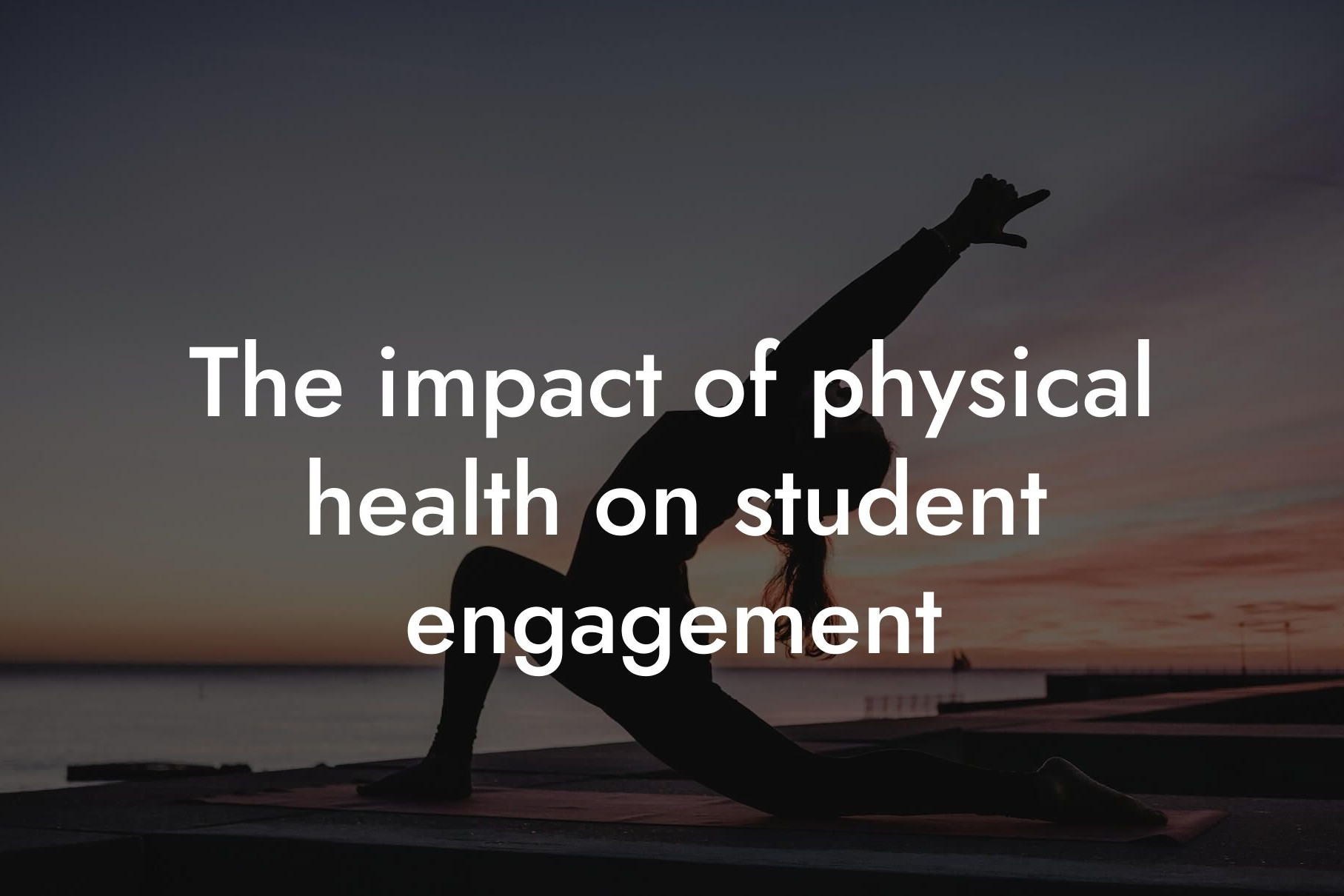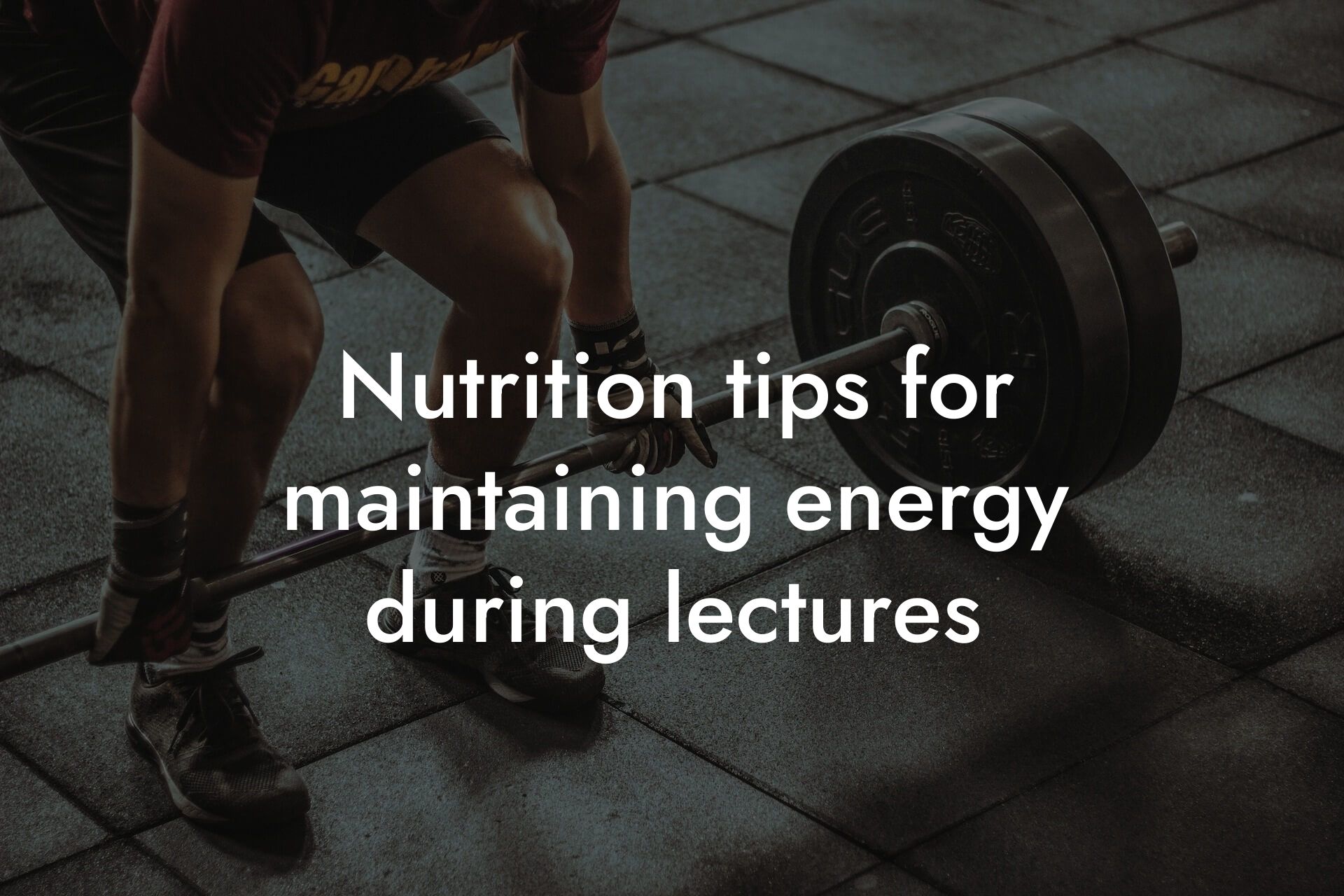Teaching is a highly demanding profession that can take a toll on one's physical and mental health. The constant pressure to meet curriculum requirements, manage classroom behavior, and provide individualized support to students can lead to chronic stress. Prolonged stress can result in burnout, decreased productivity, and a decline in overall well-being. However, incorporating physical fitness into one's lifestyle can be an effective way to manage stress and improve overall health. In this article, we will explore the importance of physical fitness in managing stress for teachers and provide practical tips on how to get started.
Table of Contents
The Impact of Stress on Teachers' Health
Teaching is a high-stress profession, and the consequences of chronic stress can be severe. Research has shown that teachers are at a higher risk of developing anxiety, depression, and cardiovascular disease compared to the general population. Stress can also lead to physical symptoms such as headaches, fatigue, and insomnia, making it challenging to perform daily tasks. Moreover, stress can affect a teacher's ability to concentrate, leading to decreased productivity and poor performance in the classroom.
The Benefits of Physical Fitness for Stress Management
Regular physical activity has been shown to have a positive impact on stress management. Exercise reduces the production of stress hormones, such as cortisol, and releases endorphins, which are natural mood-boosters. Physical fitness can also improve sleep quality, increase energy levels, and enhance cognitive function. Furthermore, exercise can provide a healthy distraction from the demands of teaching, allowing teachers to recharge and refocus.
How Physical Fitness Improves Mental Health
Physical fitness has a profound impact on mental health, particularly in reducing symptoms of anxiety and depression. Exercise has been shown to increase the production of neurotransmitters, such as serotonin and dopamine, which regulate mood and emotions. Regular physical activity can also improve self-esteem, body image, and overall confidence. Moreover, exercise can provide a sense of accomplishment and control, which can be particularly beneficial for teachers who often feel overwhelmed by their workload.
Types of Physical Fitness for Stress Management
There are various types of physical fitness that can be beneficial for stress management. Aerobic exercises, such as running, cycling, or swimming, are effective in reducing stress and anxiety. Resistance training, such as weightlifting or bodyweight exercises, can improve mood and reduce symptoms of depression. Yoga and Pilates can also be beneficial in reducing stress and improving flexibility and balance. Ultimately, the type of exercise that is most effective for stress management is the one that is enjoyable and sustainable.
Creating a Physical Fitness Routine for Teachers
Creating a physical fitness routine can be challenging, especially for busy teachers. However, incorporating physical activity into one's daily routine can be achieved with a few simple steps. Start by scheduling a specific time for exercise, such as early morning or lunch break. Begin with small, achievable goals, such as taking a 10-minute walk or doing a few jumping jacks during commercial breaks. Gradually increase the intensity and duration of workouts as fitness levels improve. It's also essential to find a workout buddy or join a fitness group to provide motivation and accountability.
Overcoming Barriers to Physical Fitness
Despite the benefits of physical fitness, many teachers face barriers that prevent them from incorporating exercise into their daily routine. Common barriers include lack of time, energy, or motivation. However, there are ways to overcome these barriers. For example, teachers can try high-intensity interval training (HIIT), which involves short bursts of intense exercise followed by brief periods of rest. HIIT workouts can be completed in as little as 10-15 minutes, making them an ideal option for busy teachers. Additionally, teachers can try online workout programs or mobile apps that provide convenient and accessible exercise options.
Managing stress through physical fitness is a critical component of maintaining overall health and well-being for teachers. By incorporating regular physical activity into their daily routine, teachers can reduce symptoms of anxiety and depression, improve sleep quality, and increase energy levels. While creating a physical fitness routine can be challenging, the benefits far outweigh the costs. By prioritizing physical fitness, teachers can improve their overall health, increase their productivity, and provide a better learning environment for their students.
At Tano Performance Group, we understand the importance of physical fitness in managing stress and improving overall health. Our comprehensive body assessment using DEXA technology provides individuals with a detailed understanding of their body composition, bone density, and physique. With this information, our team of experts can provide personalized guidance on how to achieve optimal physical fitness and reduce stress. Contact us today to learn more about how we can help you achieve your fitness goals and improve your overall well-being.
Frequently Asked Questions
What is the impact of stress on teaching professionals?
Teaching professionals often experience high levels of stress, which can lead to burnout, decreased productivity, and a negative impact on their overall well-being. Chronic stress can also increase the risk of anxiety, depression, and cardiovascular disease. It's essential for teachers to find effective ways to manage stress to maintain their physical and mental health.
How does physical fitness help reduce stress in teaching professionals?
Regular physical activity has been shown to reduce stress and anxiety in teaching professionals by releasing endorphins, also known as "feel-good" hormones. Exercise can also improve sleep quality, boost mood, and increase energy levels, all of which can help mitigate the negative effects of stress.
What are some common physical activities that can help reduce stress in teaching professionals?
There are many physical activities that can help reduce stress in teaching professionals, including aerobic exercises like running, cycling, or swimming, as well as strength training, yoga, and Pilates. Even simple activities like walking or stretching can be beneficial in reducing stress and improving overall well-being.
How often should teaching professionals engage in physical activity to reduce stress?
The American Heart Association recommends at least 150 minutes of moderate-intensity aerobic physical activity or 75 minutes of vigorous-intensity aerobic physical activity per week to reduce stress and improve overall health. However, even small amounts of physical activity can be beneficial, and it's essential to find a routine that works for each individual.
What are some tips for fitting physical activity into a busy teaching schedule?
Teaching professionals can fit physical activity into their busy schedules by waking up earlier to exercise, using their lunch break to take a walk or do a quick workout, or incorporating physical activity into their daily commute. They can also try breaking up their physical activity into shorter sessions throughout the day.
How can teaching professionals overcome barriers to physical activity, such as lack of time or energy?
Teaching professionals can overcome barriers to physical activity by finding activities they enjoy, scheduling physical activity into their daily routine, and finding a workout buddy or accountability partner. They can also try finding low-cost or free physical activity options, such as bodyweight exercises or online workout videos.
What is the importance of self-care for teaching professionals?
Self-care is essential for teaching professionals to maintain their physical and mental health. It involves taking care of one's physical, emotional, and mental well-being by engaging in activities that bring joy and relaxation. Self-care can include physical activity, meditation, reading, or spending time with loved ones.
How can teaching professionals prioritize self-care when they have a heavy workload?
Teaching professionals can prioritize self-care by scheduling it into their daily routine, just as they would any other important task. They can also try delegating tasks, setting boundaries, and taking regular breaks to reduce feelings of burnout and increase productivity.
What is the impact of physical fitness on cognitive function in teaching professionals?
Regular physical activity has been shown to improve cognitive function in teaching professionals, including improved memory, concentration, and problem-solving skills. Physical fitness can also increase creativity, boost mood, and reduce symptoms of anxiety and depression.
How can physical fitness improve sleep quality in teaching professionals?
Regular physical activity can help improve sleep quality in teaching professionals by reducing stress and anxiety, improving mood, and increasing energy levels. Exercise can also help regulate sleep patterns and improve the quality of sleep.
What are some common misconceptions about physical fitness and stress reduction in teaching professionals?
One common misconception is that physical fitness requires a significant amount of time and energy. However, even small amounts of physical activity can be beneficial in reducing stress and improving overall well-being. Another misconception is that physical fitness is only for young or athletic individuals, when in fact, physical activity can be adapted to suit any age or fitness level.
How can teaching professionals get started with a physical fitness routine?
Teaching professionals can get started with a physical fitness routine by consulting with a healthcare professional, setting realistic goals, and finding an exercise routine that they enjoy. They can also try finding a workout buddy or accountability partner to increase motivation and support.
What are some resources available to teaching professionals to support their physical fitness journey?
There are many resources available to teaching professionals to support their physical fitness journey, including online workout videos, fitness apps, and local gyms or fitness studios. They can also try consulting with a healthcare professional or a certified fitness trainer to develop a personalized fitness plan.
How can teaching professionals track their progress and stay motivated?
Teaching professionals can track their progress and stay motivated by setting realistic goals, tracking their physical activity, and celebrating small victories. They can also try finding a workout buddy or accountability partner to increase motivation and support.
What is the importance of community support for teaching professionals in their physical fitness journey?
Community support is essential for teaching professionals in their physical fitness journey, as it can provide motivation, accountability, and a sense of belonging. Teaching professionals can find community support through online fitness groups, local fitness studios, or workout buddies.
How can teaching professionals balance their physical fitness goals with their professional responsibilities?
Teaching professionals can balance their physical fitness goals with their professional responsibilities by prioritizing their time, setting realistic goals, and finding ways to incorporate physical activity into their daily routine. They can also try finding ways to make physical activity a part of their professional development, such as taking a fitness class or workshop.
What are some common physical fitness goals for teaching professionals?
Common physical fitness goals for teaching professionals may include increasing energy levels, improving sleep quality, reducing stress and anxiety, or improving overall physical health. They may also include specific fitness goals, such as running a certain distance or completing a certain number of workouts per week.
How can teaching professionals maintain their physical fitness goals over time?
Teaching professionals can maintain their physical fitness goals over time by setting realistic goals, tracking their progress, and finding ways to stay motivated. They can also try finding a workout buddy or accountability partner, and celebrating small victories along the way.
What is the impact of physical fitness on overall well-being in teaching professionals?
Regular physical activity has been shown to have a positive impact on overall well-being in teaching professionals, including improved physical health, mental health, and cognitive function. Physical fitness can also increase energy levels, improve sleep quality, and reduce symptoms of anxiety and depression.
How can teaching professionals make physical fitness a sustainable part of their lifestyle?
Teaching professionals can make physical fitness a sustainable part of their lifestyle by finding activities they enjoy, scheduling physical activity into their daily routine, and finding ways to stay motivated. They can also try finding a workout buddy or accountability partner, and celebrating small victories along the way.
What are some tips for teaching professionals to stay motivated and engaged in their physical fitness journey?
Teaching professionals can stay motivated and engaged in their physical fitness journey by setting realistic goals, tracking their progress, and finding ways to stay motivated. They can also try finding a workout buddy or accountability partner, and celebrating small victories along the way. Additionally, they can try mixing up their workout routine, trying new activities, and rewarding themselves for their progress.
Here are some related articles you might love...
- The impact of physical health on student engagement
- How DEXA scans can benefit education professionals
- Nutrition tips for maintaining energy during lectures
- How educators can stay fit during long teaching days
- The role of physical fitness in classroom management
- Balancing grading and lesson planning with personal fitness
- Quick workouts for educators during breaks
- How to stay active in a sedentary teaching job
- The connection between fitness and effective teaching
Zak Faulkner
Zak Faulkner is a leading authority in the realm of physical health and body composition analysis, with over 15 years of experience helping professionals optimise their fitness and well-being. As one the experts behind Tano Performance Group, Zak has dedicated his career to providing in-depth, science-backed insights that empower clients to elevate their physical performance and overall health.
With extensive knowledge of DEXA technology, Zak specializes in delivering comprehensive body assessments that offer precise data on body fat, muscle mass, bone density, and overall physique. His expertise enables individuals to make informed decisions and achieve their fitness goals with accuracy and confidence. Zak’s approach is rooted in a deep understanding of human physiology, combined with a passion for helping clients unlock their full potential through personalised strategies.
Over the years, Zak has earned a reputation for his commitment to excellence, precision, and client-focused service. His guidance is trusted by top professionals who demand the best when it comes to their health. Whether advising on fitness programs, nutritional strategies, or long-term wellness plans, Zak Faulkner’s insights are a valuable resource for anyone serious about taking their health and fitness to the next level.
At Tano Performance Group, Zak continues to lead our Content Team revolutionising how professionals approach their physical health, offering unparalleled expertise that drives real results.




